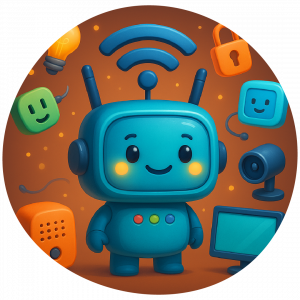“Where there’s smoke there’s fire”
Technology, like other open media, brings risks for our children; we can not ignore them. Some of these risks are:
• Access to inappropriate content.
• Addiction to technology.
• Cyberbullying.
• Sexting.
The misuse of technology devices can even bring harm to physical health. It is important not to abuse of technology usage and take appropriate positions to avoid problems such as the following:
• Back pains.
• Tendinitis and carpal tunnel syndrome.
• Thumb discomfort.
• Visual fatigue due to the size and brightness of the screen.
The first concrete recommendation: as parents we can not be catastrophic. We can not put our children in a capsule and isolate them from the use of technology. Yes, we can take measures to minimize risks and promote digital citizenship from home.

“It’s the last straw that breaks the camel’s back”
The good use of technology in our homes is achieved with constancy, not with sporadic efforts. A basic advice is to agree rules and schedules for the technology use, for example:
• Shifts of 30 to 45 minutes maximum of constant use of technology, then change activity. Periods may vary by age (smaller children, shorter shifts).
• Hours in which technology can be used.
• Moments when technology can not be used.
• Places where technology can be used: “high traffic”, not enclosed.
• Allowed websites and not allowed sites. When is accompaniment required?
There are several tools to help us evaluate usage, create routines and basic safety rules. Some tools for this purpose are:
- Qustodio: navigation filter, schedules, site blocking and activity log.
- Microsoft Family: navigation filter, time limits, internet use and activity on each computer.
- Checky: how many times is the mobile phone checked daily?
- Quality Time: activity record in the mobile, scheduled breaks, notifications.
“You don’t need glasses to see what’s in front of your nose”
Social networks, games and applications have terms of use and minimum ages to register. As parents, we must know and respect them.
• Facebook, Instagram and Snapchat: 13+ years.
• Twitter: 17+ years.
• YouTube: From 17+ years, and 13 years with adult supervision for certain content.
• WhatsApp: 16+ years.
Source: http://www.net-aware.org.uk/networks
There are obvious behaviors that are risky for our children:
• Publish intimate photographs or videos.
• Share private data such as addresses, credit cards, telephone number.
• Contact with strangers in social networks.
• Dependence on the use of technology: loss control of time, compulsive connection, suppression of hours of food and sleep.
• Cyberbullying: harassed or stalker?

“Hunt with cats and you catch only rats”
As in real life, the choice of “friends” is fundamental in virtual life. Who are the contacts of our children in social networks? What kind of content do they share? A practical step is to configure the privacy options of your accounts together.
Why do our children use technology at home? Are they using technology for their learning? Some benefits that we can take advantage of at home:
• Wide source of information.
• Increases the motivation of our children to learn.
• Provides resources to exercise skills, for example, mathematical operations.
• Allows exploring and playing with the concepts.
• Provides a production and expression environment to create original works.
• Facilitates personalized learning, at the pace of each one.
“Don’t leave until tomorrow what you can do today”
As parents we can not ignore the responsibility of training our children in digital citizenship, promoting the appropriate use of technology. Education begins at home.
Given the risks and dangers posed by the internet, social networks, games and other technology resources, we must have a proactive attitude, not a passive one. It is not about finding magical formulas to promote the appropriate use of technology. In the virtual, we must promote the same values as in real life, including:
• Respect
• Honesty
• Discipline
• Solidarity
• Responsibility
“What goes around comes around”



